Rev. James A. Stokes – African American with the 9th Pennsylvania Cavalry?
Posted By Norman Gasbarro on September 17, 2014
In searching post-Civil War newspapers for information about reunions, encampments and obituaries of veterans of the 9th Pennsylvania Cavalry, a surprising story was found in the Harrisburg Patriot of 1 February 1905:
In Pastor’s Honor.
Aa [sic] testimonial will be tendered to Rev. James A. Stokes by his daughter, Mrs. Clara Smith, on Friday evening, 10 February, at his home, 239 Cranberry Avenue, the occasion being the commemoration of his 64th birthday. He will be at home to his friends from 5 to 11 on that day. Mr. Stokes was born in Warren County, Kentucky, 10 February 1841, escaped from slavery in 1861, joined the Ninth Pennsylvania Cavalry at Free Springs, Kentucky, came to Harrisburg in 1864, re-enlisted in the Forty-fifth Regiment, U.S. Colored Troops [45th U.S.C.T.], returned to Harrisburg in 1865.
Did this brief article mean that Rev. Stokes “met the cavalry” at or around Free Springs, Kentucky, who then provided him a way north to Harrisburg? Or did it mean that he “joined the ranks” of the cavalry, serving in some capacity with them until 1864, then going north with other members who were discharged because their term of service had ended?
Rev. James A. Stokes record in the Civil War is documented in his pension application files and his his military records.
The Pension Index Card (shown above from Fold3) notes that a person named James Stocks applied for an invalid pension on 31 March 1888, which he received based on his service only in the 45th United States Colored Troops, Company D, as a Private. This same James Stocks died on 31 December 1923 in Harrisburg. There was no widow’s application.
The Pennsylvania Death Certificate (above from Ancestry.com) confirms that James Stokes and James Stocks were the same person, that he was “colored,” that he was born on 1 February 1841, and that he died in Harrisburg on 31 December 1923 of carcinoma of the stomach. The informant was Clara Stocks, possibly the same person identified in the news article (above) as Mrs. Clara Smith.
Turning to the military records, it was quickly discovered that there was no James Stokes in the 45th U.S.Colored Troops. There was however, a James Stout found in Company D of that regiment. James Stout was mustered into service on 18 July 1864 at Harrisburg and then went to Camp William Penn in Philadelphia for his basic training. The Military Index Cards which reverence the muster rolls of this regiment were located on Fold3 for August, October, December, of 1864 and for February, April, June, and August of 1865. The final card, shown below, is the reference to the muster our record.
The card referencing the muster out roll gives the date and place of his discharge: Brownsville, Texas, 4 November 1865. James Stout (or James Stocks or James Stokes as he was later called), was owed $100 on discharge. At this point, he supposedly returned to Harrisburg.
The military records also give the information that James was 5 foot 3 inches tall, was 23 years old at the time of enlistment, had black complexion, black hair, and black eyes, was born in Woodburn, Kentucky, and was by occupation a laborer.
The signature on the enlistment papers (above, from Fold3) is evidence that during the Civil War, James could not sign his name. His “mark” of “X” was witnessed by two person. His voluntary enlistment was credited to Lewis Township, Northumberland County, Pennsylvania – the 14th Congressional District.
The records between the end of the Civil War and the end of the nineteenth century are still being researched. The Harrisburg city directories show an evolution in his employment from laborer to porter to express agent. He has been located in the early 20th century censuses of Harrisburg – first as a teamster, with his own team, and finally into retirement by the 1920 census. The African American newspaper, State Journal, reported him ordained as a deacon in the African Methodist Episcopal Church in 1884, and many articles have been located in the Harrisburg Patriot where he is referenced as “Rev. James A. Stokes.” Most of the 20th century Harrisburg city directories refer to him as “Rev.”
There is evidence that James A. Stokes was married to Annie M. Henderson, and at least two children have been confirmed from that union: Clara Stokes, who married a Smith, was born some time around 1872; and Frank Theophilus Stokes, born about 1884,who married Grace Moston.
Turning now to the question of whether there is any documented evidence that James A. Stokes served in the 9th Pennsylvania Cavalry, no record has been seen which places anyone of the name James A. Stokes (or similar name) in that regiment, though it is possible that he followed the cavalry in some unofficial capacity, doing necessary work, but this is only speculation.
The Kentucky place names previously given were Woodburn and Warren County. Warren County, Kentucky is located south of Louisville, near the border of Tennessee, and on the road to Nashville. The county seat is Bowling Green. Woodburn, Kentucky, is a small community about 5 miles south of Bowling Green. From the map provided by John W. Rowell in Yankee Cavalrymen (pages 16-17) of the “territory traveled by the 9th Pennsylvania Cavalry,” it can be seen that the Louisville and Nashville Railroad passed through this area. By following in reverse the route taken by the 9th Pennsylvania Cavalry, the railroad connections go from Louisville, north to Jeffersonville, Indiana; from there to Indianapolis; then through Ohio to Pittsburgh; and finally to Harrisburg – if James A. Stout took that route. If he followed the 9th Pennsylvania Cavalry through the war years he would have spent a great deal of time in the states of the Confederacy, moving through enemy territory, always with the chance of being captured. In that it is clear from his enrollment papers that he was in Harrisburg as early as March 1864, it is more likely that he arrived there via the northern route (railroads described above) and that he did not stay with the 9th Pennsylvania Cavalry as it headed into the deep south.
Therefore, in further researching the pre-1864 life of James A. Stokes, it is essential to understand the geography and history of Woodburn and Warren County, Kentucky. Perhaps in some of the documents of that area, he can be located. And, having an understanding of the movements of the 9th Pennsylvania Cavalry and some of the skirmishes and battles that took place there, might give some insight into how James A. Stokes met up with this regiment and what could have happened as a result.
Much research still needs to be done on this Civil War veteran. But, what is very clear is that an interesting story is emerging from delving further into the “In Pastor’s Honor” article that appeared in the Harrisburg Patriot, 1 February 1905.
Comments are invited.
 ;
;
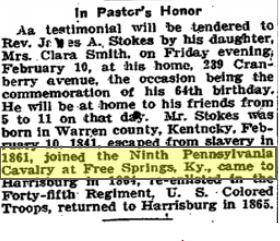
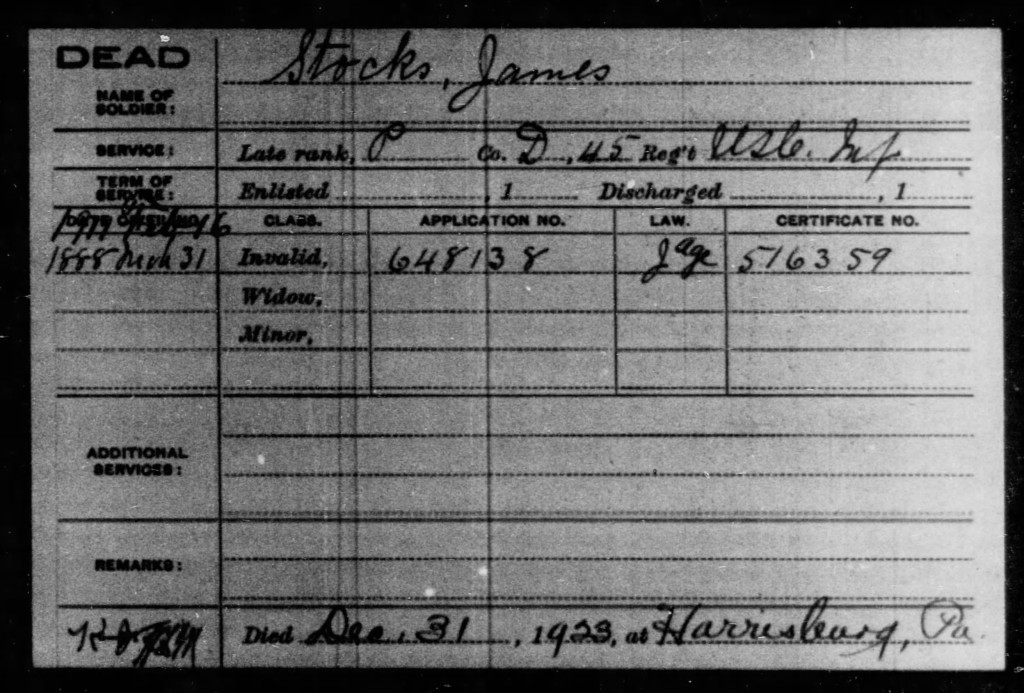
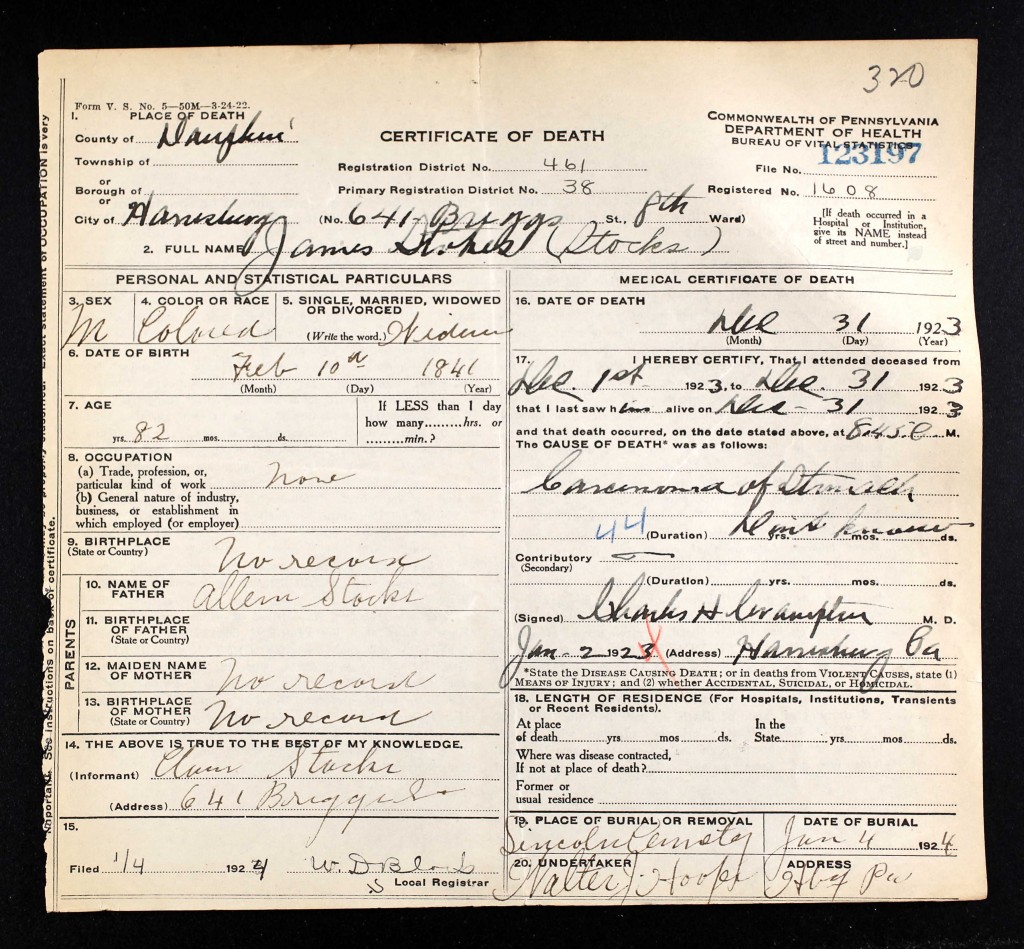
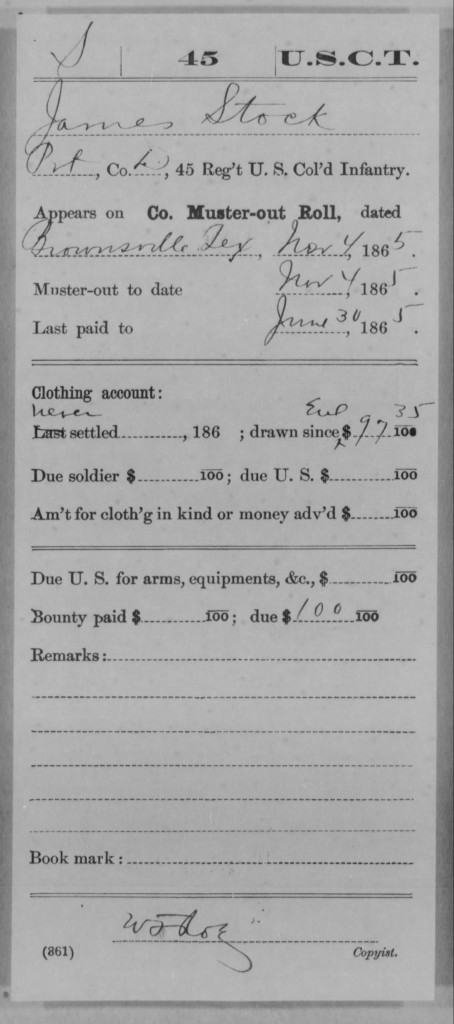
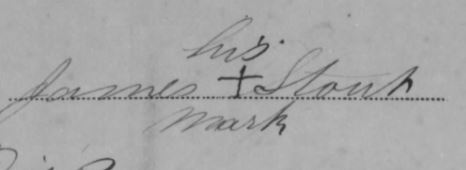


Comments